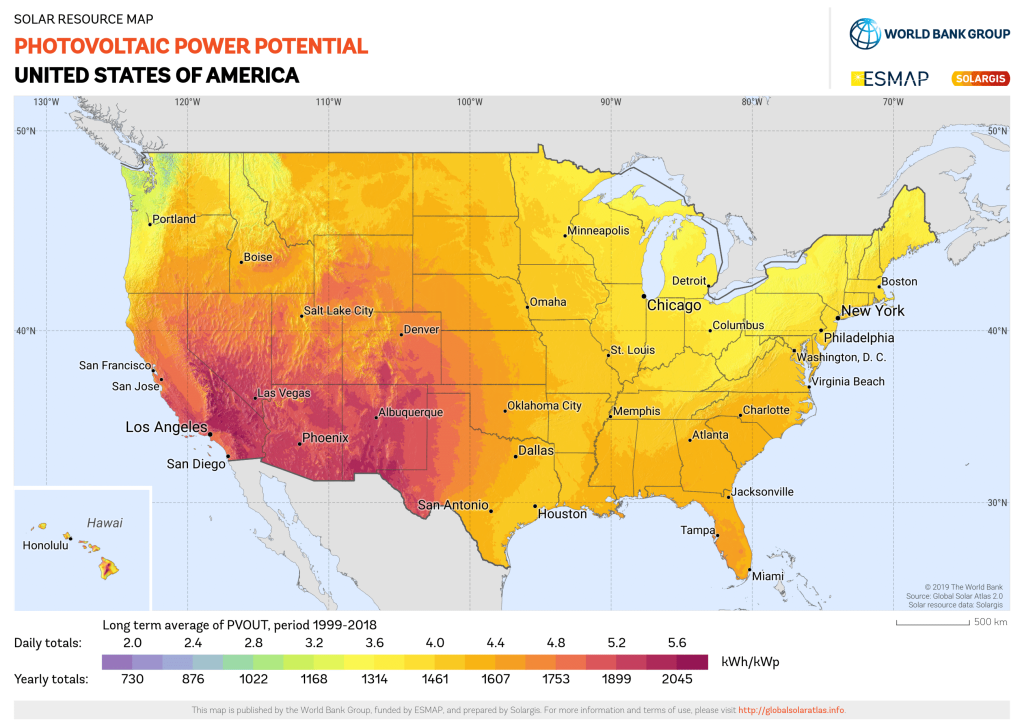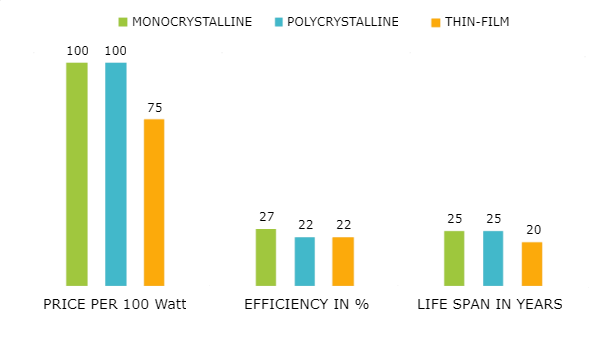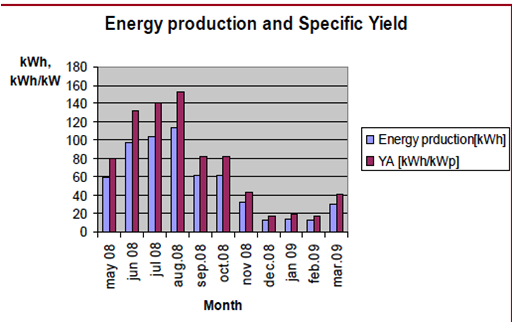How Many Solar Panels You Need For Your Home?
Reduce your carbon footprint while reducing your electric bill by switching to solar energy. However, before installing a clean energy system in your home, you must first answer an important question: “Understand How Many Solar Panels Do You Need?”
A professional assessment is necessary to determine the ideal number of solar panels for your home. Based on your electric bills, energy requirements, and available roof space, you can estimate the size and cost of the system.
Here are the general steps:
- Calculate how much energy your home uses
- Make sure your home gets enough sunlight and how much roof space you have.
- Estimate your system's size by finding out the specific yield of solar panels in your area
- If you plan to buy a particular solar panel, check its wattage
- Calculate your system’s wattage by dividing it by the panel's wattage.
Read on for complete details of each step of the process. Or, to consult with a professional and start designing your system right away,
Also Read:- How to Fix Ring Doorbell Solar Panel Is Not Charging?
Factors That Influence How Many Solar Panels You Need: Size and Output
There are several factors to consider when determining how many solar panels are needed to power a house. For example, The California home will need fewer solar panels than the New York home because the state gets more sunlight. An identical home powered by solar energy in California and New York will use exactly the same amount of energy.
The following are some of the most important factors to consider when figuring out many solar panels you need:
Size of Your Home and Available Roof Space
The electrical consumption of larger homes tends to be greater, so they need more solar panels. However, there can be exceptions to the rule. For example, the power consumption of a 1200 square foot house with older less efficient appliances may be lower than in a 2000 square foot house with new energy star appliances.
Various types of surfaces are suitable for installing solar panels. It might be impossible to install more solar panels on your roof than your home can handle.
You'll have to install panels around chimneys, rooftop air conditioning units, and skylights, for example.
Also, panels should not be installed on roofs that are covered by shadows. Additionally, most top solar companies will not work on asbestos roofs due to possible health risks.
Amount of Direct Sunlight in Your Area

Solar energy can be converted into electricity more readily in places where sunlight is more abundant. Stated differently, solar panels can produce more electricity every year like Arizona or New Mexico, which get a larger amount of sunlight than less sunny regions like New England.
The World Bank has created solar radiation maps for over 200 countries and regions, including the U.S. The map below can give you an idea of the sunshine available in your location. Keep in mind that homes in sunnier regions will generally need fewer solar panels.
Number of Residents and Amount of Energy You Use
Households with more members normally use a higher amount of electricity, and this also means they need more solar panels to increase energy production.
Electricity usage is a very important factor, as it determines how much power must be generated by your solar panel system. If your home uses 12,000 kilowatt-hours (kWh) per year and you want to go 100% solar, your system must be capable of generating that amount of power.
Type of Solar Panel and Efficiency Rating

With high-efficiency panels, you can achieve your energy-generation goals with fewer panels, since they can deliver more watts per square foot. Solar panels made from monocrystalline crystals are generally the most efficient. Followed by those made from polycrystalline crystals.
How to Estimate the Number of Solar Panels You Need
So, therefore, how many solar panels are necessary to power a house? Normally, If you want to find out how many solar panels you need without consulting a professional.
You’ll need to figure out two basic things: how much energy you use and how much energy your panels will produce.
Calculating How Many Kilowatt-Hours Your Home Uses
According to the latest data from the U.S. Energy Information Administration (EIA), the average American home uses 10,649 kWh of energy per year.
However, this varies depending on the state. For example:
- Louisiana homes have the highest average consumption, at 14,787 kWh per year.
- Hawaii homes have the lowest average consumption, at 6,298 kWh per year.
Add up your last 12 power bills in order to obtain a more accurate estimate of how much energy you use each year. The amount of energy you will consume will vary depending on things like the size of your home.
How many people live in it, your electricity consumption habits, and how energy-efficient are your home appliances are.
Solar Panel Specific Yield

Having determined how much electricity your home uses each year. It is important to calculate how much kWH each of your solar panels produces during the course of the year.
It depends on the type of solar panel, the roof structure, and the time of day when the sun is most intense.
In the solar power industry, “specific yield” or “specific production” is one of the metrics used to measure system capacity. This can be defined as the annual kWh of energy produced for each kilowatt of solar capacity installed. Specific yield has much to do with the amount of sunlight available in your location.
Checking reliable sources, such as the World Bank solar maps or the National Renewable Energy Laboratory's solar radiation database, can help you determine the specific yield you can achieve in your area.
To estimate how many kW is needed to run a house, you can divide your annual kWh consumption by the specific yield per kilowatt of solar capacity.
For example, if your home needs 15,000 kWh of energy per year, and solar panels have a specific yield of 1,500 kWh/kWp in your location, you will need a system size of around 10 kilowatts.
Paradise Energy Solutions has also come up with a general formula to roughly ballpark the solar panel system size you need.
You can simply divide your annual kWh by 1,200 and you will get the kilowatts of solar capacity needed.
So, if the energy consumption reported on your last 12 power bills adds up to 24,000 kWh, you’ll need a 20 kW system (24,000 / 1,200 = 20).
So, How Many Solar Panels Do I Need?
You can determine how many panels you need for your solar array once you know the size of the system. Dividing the wattage of each solar panel by the system size gives you the watts.
Most of the best solar panels on the market have an output of around 330W to 360W each. The output of less efficient panels can be as low as 250W.
So, if you need a 10-kW solar installation and you’re buying solar panels that have an output of 340W, you’ll need 30 panels. Your formula will look like this: 10,000W / 340W = 29.4 panels.
If you use lower-efficiency 250-watt solar panels, you’ll need 40 of them (10,000W / 250W = 40) panels.
Keep in mind that, although the cost of solar panels is lower if you choose a lower-efficiency model over a pricier high-efficiency one, the total amount you pay for your solar energy system may come out to be the same or higher because you’ll have to buy more panels.
Conclusion: Are Solar Panels Worth it for Your Home?
During their operation, solar panels do not emit carbon dioxide. However, the EIA estimates fossil fuels still produce around
60% of the electricity is delivered by U.S. power grids.
For most homeowners, renewable energy systems are a good financial investment, even if solar panels are an initial investment. They typically pay back in about 10 years, and have a rated service life of up to 30 years, according to the department of energy. After recovering your initial investment, you will have a source of clean and free electricity for about two decades.
In addition, even if you have a large home or discover you need more solar panels than you expected, you can still save on your solar power system by qualifying for both federal and local tax credits, rebates, and other incentives.